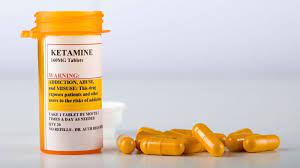Can residential treatment be affordable?
Sure. In fact, I’ve been impressed by some efforts I’ve seen to meet the demand for affordable residential treatment in smaller rural communities (where the demand, unfortunately, may be greatest).
The two principal needs seem to be for short-term detox/stabilization and for longer-term transitional housing geared to the needs of recovering folks.
Stabilization programs have to be able to accommodate stays of 2-7 days. Transitional housing programs seem to settle on 60-90 days. The traditional halfway house stay of 6 months seems less popular, mostly because clients refuse to make that commitment.
Along with outpatient, the mix of short-stay and transitional housing programs represents the ‘bones’ of an affordable continuum of services– one that can serve several neighboring counties and even provide capacity for other regions.
The planning process begins with a needs assessment. Local authorities use data to determine the characteristics of a likely residential treatment population. Age, gender, substance history, patterns of use, medical and psychiatric needs, crisis potential, family/ employment/ education status, etc.– the usual suspects. That information is used to establish the acuity of services needed. Acuity simply means intensity of care and supervision required.
Now for the planning. Smaller communities can retain the services of an expert for short-term assistance in this regard. Here’s a link to a downloadable SAMHSA PDF publication with an overview of the process:
Detoxification and Substance Abuse Treatment: A Treatment Improvement Protocol
Let’s say your community’s need is greatest for a short-term facility for alcohol users. Options include a so-called “social” detox with support and monitoring, or one that also makes limited use of medication to avoid complications of withdrawal. I’ve seen hybrid models where detoxification is actually managed on an outpatient basis, but the physician has the option of having the individual stay overnight, or for several days, when additional monitoring is advised for safety’s sake. An example: the client is homeless or resides in a ‘toxic’ living environment that could undermine the goals of treatment.
The risk of relying exclusively on short-term stabilization is of course the ‘revolving door’ of repeat admissions. It’s the same problem that emerges when intoxicated persons are taken to jail. This is where longer term residence comes in. Instead of a straight discharge to OP (which often results in a quick return to substance use), the now-stabilized individual is transferred to another bed in the same or a nearby facility.
In practice, here’s how it might work: Someone seeks or is referred for help. An assessment is completed, leading to a brief period of supervised withdrawal. Once medically stable, the individual occupies a bed in community housing while participating in IOP. After completing, s/he continues in OP, finds a job, and begins paying a fee for services. Meanwhile the program assists in building a savings account for transitioning back into the community (rent, deposits, etc). The client can be enrolled with medical and mental health providers. Projected length of stay in each phase: Phase One 3-5 days; Phase 2 (IOP in community housing) 4-8 weeks; Phase 3 (OP, now employed, still in community housing), 30-60 additional days. In some communities, private recovery homes supplement the continuum.
It’s a public health model in which the needs of the larger community– in terms of disease risk, criminal activity, child welfare, homelessness, utilization of costly hospital and emergency services, and relieving jail overcrowding– are taken into account in planning, alongside the needs of the individual receiving treatment.
If the community’s needs happen to skew towards opiate and polydrug users, OTP and MAT can also be provided within the context of other treatment services. That’s a way of avoiding the ‘gas and go’ phenomenon that afflicts some opioid maintenance programs.
As a rule, the more services that are provided through the program itself, rather than by referral out, the better the quality of case management, and the higher the rate of retention in treatment. That’s important, because the tendency of SUD clients is to ‘fall through the cracks’ in any system, and when they do, they recidivate.
Most communities have unused buildings, homes, or facilities that can be converted to such uses. Often renovation and retrofitting is done by experienced volunteers using donated materials and money. Food, clothing, and other needs are partially met by donations, as well. In one small city visited, the addictions program now serves as a food and clothing bank for all the nonprofits in that community.
This makes for a fine community project. Leaders may emerge who form the basis for a nonprofit Board of Directors.
Nationwide, the demand for such affordable residential care appears huge. Two things to remember: first, if licensed treatment is provided onsite by the organization, it can be billed to Medicaid or other sources, becoming an important (perhaps the most important) contributor to revenue. Second, once a residential facility covers its fixed costs– core staff, infrastructure, plant and operations, etc.– the program’s cost per occupied bed will decrease significantly. That’s where true sustainability comes from: expansion of capacity.
All of which means that the Board of such a facility needs active strategic planning from the outset. The more successful the program, the more demand will appear. It’s one of the few areas in real life where if you build it, they really do come.
The aim is a well-managed sustainable contributor to the welfare of the community it serves. One that doesn’t depend on vulnerable funding sources. Nobody wants to be left hanging when the political process moves on to other areas.
The goal: Make addiction treatment a part of the community, rather than something apart from the community. You won’t regret it.














I would love to see this model formulated as a cost benefit analysis to present to state and local leaders.
As a front-line worker in an inpatient setting in a community where addiction is still viewed as a personal failing, I’m guessing the local response would be “these people” just need to get their act together and stop expecting handouts.
On the state level there would be greater support here, but anything that goes through the state moves at glacial speeds. We’re seeing people dying, losing their homes and their children, suffering consequences that may handicap their future significantly – no change can come soon enough.